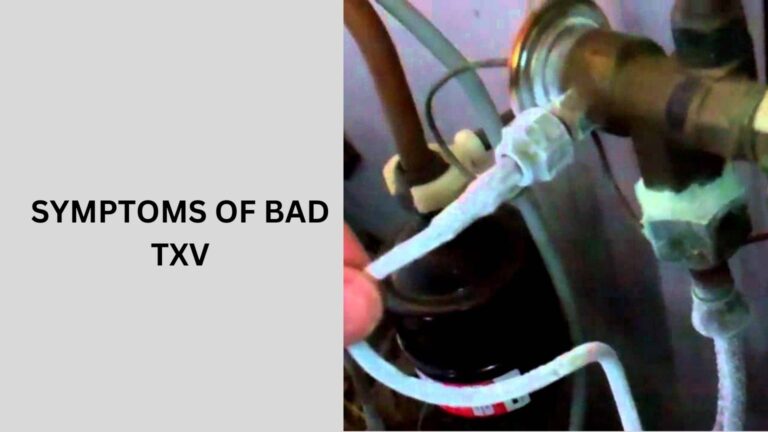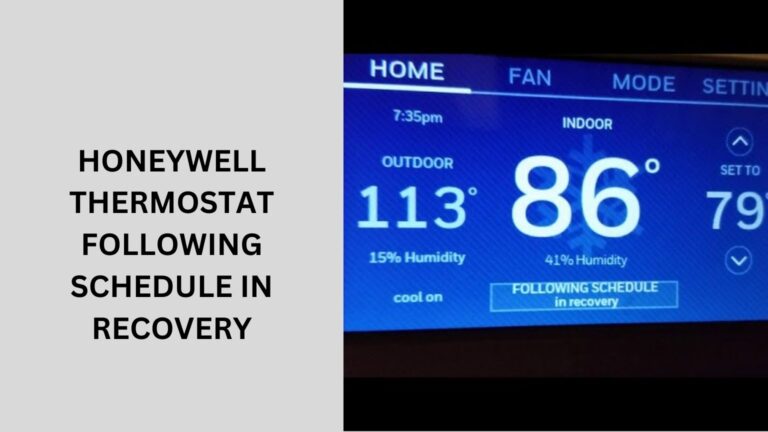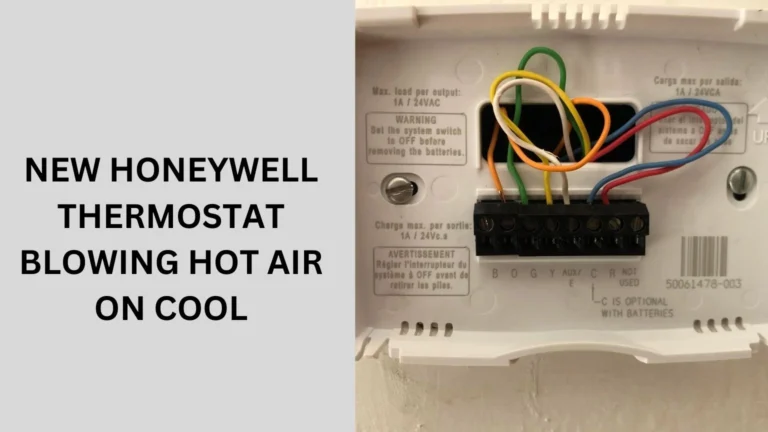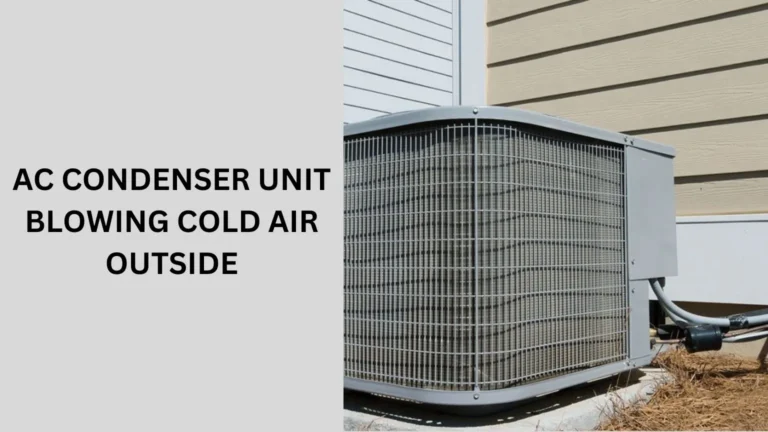How to Fix Bradford White Thermostat Well Sensor Fault?
Bradford White thermostats are renowned for their reliability in regulating water temperatures efficiently. However, like any electronic device, they can encounter issues over time. One common problem users may face is a well sensor fault.
This article provides a comprehensive guide on understanding, diagnosing, and fixing the well sensor fault in Bradford White thermostats.
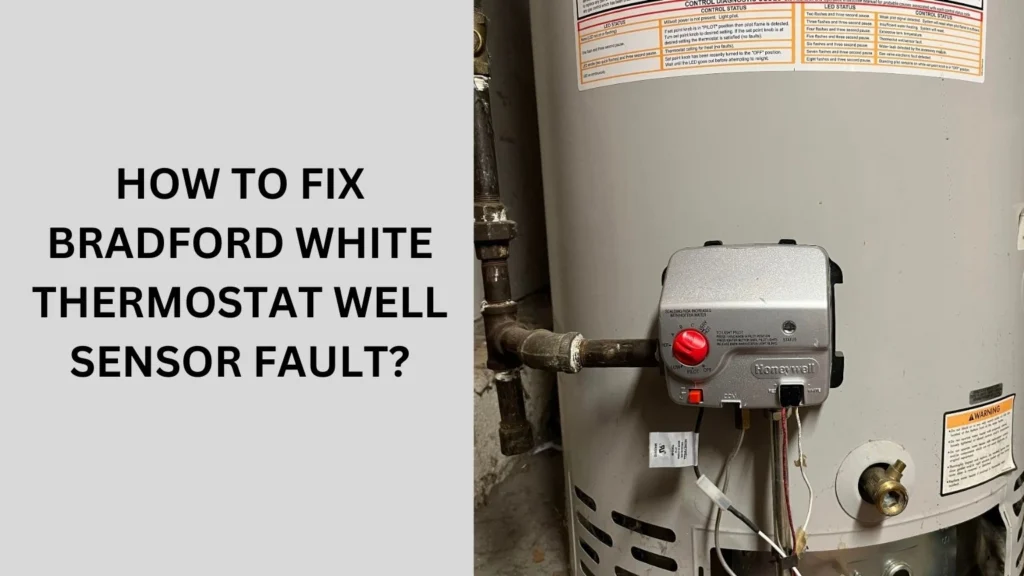
Introduction to Bradford White Thermostat Well Sensor Fault
Bradford White thermostats are essential for maintaining optimal water temperatures in residential and commercial settings.
The well sensor plays a crucial role in accurately sensing water temperatures and signaling the thermostat to adjust heating elements accordingly.
Understanding Bradford White Thermostat Well Sensor
Bradford White thermostats are essential components in maintaining optimal water temperatures, crucial for residential and commercial water heating systems.
Central to their functionality is the well sensor, a critical element that ensures precise temperature regulation.
This article delves into the workings of the Bradford White thermostat well sensor, its significance, and how it contributes to efficient water heating.
What is a Well Sensor in Bradford White Thermostat?
The well sensor in a Bradford White thermostat is a temperature-sensing device located within the water tank. It monitors the water temperature and sends signals to the thermostat control board to regulate heating operations.
Importance of the Well Sensor in Temperature Regulation
The well sensor ensures that the water temperature remains consistent, preventing overheating or insufficient heating, which can affect user comfort and appliance efficiency.
Common Symptoms of Well Sensor Fault
Detecting a well sensor fault in your Bradford White thermostat is crucial for maintaining efficient water heating.
Recognizing the symptoms early can prevent further complications and ensure timely repairs. Here are some common indicators that may suggest a well sensor issue:
Erratic Temperature Readings
A faulty well sensor may cause the thermostat to display inaccurate water temperature readings, leading to improper heating cycles.
Inconsistent Water Heating
Users may notice fluctuations in water temperature, where the water either becomes too hot or fails to reach the desired temperature consistently.
Display Error Codes
Modern Bradford White thermostats often display error codes on their digital screens when a well sensor fault occurs, indicating specific issues that require attention.
Diagnosing the Well Sensor Fault
Diagnosing a well sensor fault in your Bradford White thermostat requires systematic troubleshooting to pinpoint the exact issue affecting your water heating system. Here’s a step-by-step guide to effectively diagnose a good sensor fault:
Checking for Error Codes
- Inspect the Thermostat Display: Start by checking the thermostat display for any error codes related to the well sensor. Bradford White thermostats often display specific error messages like “SENSOR ERR” or “TEMP SENSOR FAULT” when there is a problem with the well sensor.
- Note Error Code Details: Note down the exact error code displayed, as this will provide crucial information for further diagnosis and repair.
Testing Temperature Readings
- Compare Displayed Temperature: Use a separate thermometer to measure and compare the actual water temperature with the temperature displayed on the thermostat. Significant discrepancies between the two readings can indicate a potential well sensor issue.
- Monitor Temperature Fluctuations: Observe the thermostat’s behavior over time to see if the displayed temperature fluctuates or remains inconsistent, which could point to a malfunctioning well sensor.
Visual Inspection of the Well Sensor
- Turn Off Power: Before conducting any physical inspection, ensure the power to the water heater and thermostat is turned off to prevent electrical hazards.
- Inspect Well Sensor Location: Locate the well sensor within the water heater unit. It is typically situated near the heating elements or within the tank, depending on the thermostat model.
- Check for Physical Damage: Visually inspect the well sensor for any signs of physical damage, corrosion, or loose connections. Physical damage can impair the sensor’s ability to accurately detect water temperature.
Conducting Functional Tests
- Reset Thermostat: Follow the manufacturer’s instructions to reset the thermostat after power has been restored. Resetting can sometimes resolve minor sensor faults caused by temporary glitches.
- Monitor Sensor Response: After resetting, monitor the thermostat’s operation to see if the well sensor responds correctly to temperature changes and accurately controls the heating elements.
Professional Assistance
- Consult Manufacturer Guidelines: Refer to the thermostat’s user manual or manufacturer’s website for specific troubleshooting steps and diagnostic procedures recommended for your model.
- Contact Professional Technician: If you are unable to diagnose or resolve the well sensor fault on your own, it’s advisable to contact a qualified technician. They can conduct more advanced diagnostics and perform repairs safely and effectively.
Visual Inspection of the Well Sensor
Inspect the well sensor for physical damage, corrosion, or loose connections. These issues can affect its functionality and may require cleaning or replacement.
Steps to Fix Bradford White Thermostat Well Sensor Fault
Fixing a good sensor fault in your Bradford White thermostat involves careful steps to ensure proper diagnosis, repair, and restoration of optimal water heating performance. Here’s a detailed guide on how to fix a good sensor fault:
Safety Precautions Before Starting
Before proceeding with any repairs, ensure the thermostat is powered off and disconnected from the electrical supply to avoid electrical hazards.
Steps to Replace or Repair the Well Sensor
- Disconnect the thermostat from the water heater and drain any remaining water to access the well sensor easily.
- Remove the old well sensor carefully, noting its orientation and connections.
- Install the new well sensor by securely connecting it to the thermostat according to manufacturer instructions.
- Restore power to the thermostat and check for proper functionality.
Resetting the Thermostat After Repair
After replacing or repairing the well sensor, reset the thermostat according to the manufacturer’s instructions to clear any error codes and recalibrate temperature settings.
Common Mistakes to Avoid
When dealing with a well sensor fault in your Bradford White thermostat, avoiding common mistakes can ensure successful repairs and prevent further complications. Here are some key mistakes to steer clear of during the repair process:
Neglecting Regular Maintenance
Regularly clean and inspect the well sensor to prevent the buildup of sediment or mineral deposits, which can impair its accuracy and lead to faults.
Incorrect Diagnosis of the Fault
Avoid assuming the well sensor is faulty without checking error codes or performing basic diagnostic tests. Other factors, such as electrical issues or thermostat settings, could also contribute to temperature inconsistencies.
Tips for Maintaining Bradford White Thermostat
Proper maintenance of your Bradford White thermostat ensures optimal performance and extends its lifespan. Follow these essential tips to keep your thermostat in top condition:
Regular Cleaning of Well Sensor
Clean the well sensor periodically using a soft cloth and mild detergent to remove dirt or residue that could interfere with its operation.
Monitoring Temperature Settings
Periodically check and adjust the thermostat’s temperature settings to ensure it meets your household’s hot water demands efficiently.
When to Call a Professional?
Knowing when to seek professional assistance can prevent further damage and ensure timely repairs for your Bradford White thermostat. Here are signs that indicate it’s time to call a qualified technician:
Signs You Need Professional Help
If DIY troubleshooting and repairs do not resolve the well sensor fault, or if you are uncomfortable performing electrical work, it’s advisable to seek assistance from a qualified technician.
Choosing a Qualified Technician
When selecting a technician, ensure they are certified to work on Bradford White thermostats and have experience handling well sensor faults to avoid further complications.
People also ask
What does it mean when a water heater says temperature sensor failure?
When a water heater indicates “temperature sensor failure,” it means the sensor responsible for monitoring or regulating water temperature has malfunctioned. This can lead to inaccurate temperature readings or failure to maintain desired temperatures, necessitating repair or replacement to restore proper functionality.
Where is the temperature sensor on a hot water heater?
The temperature sensor on a hot water heater is typically located near the bottom of the tank or near the heating elements. It’s designed to measure the water temperature and relay this information to the thermostat for regulation and control.
How do I fix my Honeywell thermostat sensor error?
To fix a sensor error on a Honeywell thermostat:
Restart the Thermostat: Turn off the thermostat using the power button or by adjusting the temperature settings to off. Leave it off for a few minutes before turning it back on.
Check for Loose Connections: Ensure all wires and connections to the thermostat are secure and properly connected.
Clean the Sensor: Use a soft cloth to gently clean the sensor on the thermostat. Dust or debris can sometimes cause sensor errors.
Reset or Replace: If the error persists after these steps, consult the thermostat’s manual for reset instructions. If necessary, consider replacing the sensor or contacting a professional technician for further assistance.
How do I know if my thermostat is bad on my water heater?
You can tell if your thermostat on your water heater is bad if:
Inconsistent Water Temperature: The water temperature fluctuates unexpectedly or doesn’t reach the set temperature.
No Hot Water: The water heater fails to produce hot water despite being powered on and functioning.
Faulty Temperature Reading: The thermostat displays incorrect temperature readings that do not match the actual water temperature.
Visible Damage or Corrosion: Physical inspection reveals visible damage, corrosion, or loose connections on the thermostat unit.
Conclusion
How to Fix Bradford White Thermostat Well Sensor Fault? requires careful diagnosis, appropriate tools, and a methodical approach.
By understanding the symptoms, performing diagnostic checks, and following safety guidelines, users can effectively restore their thermostat’s functionality and ensure consistent water heating performance.

